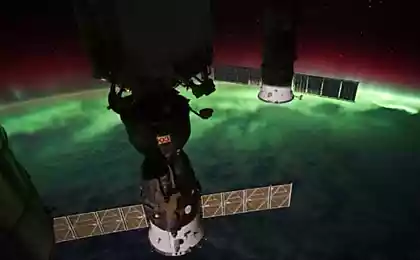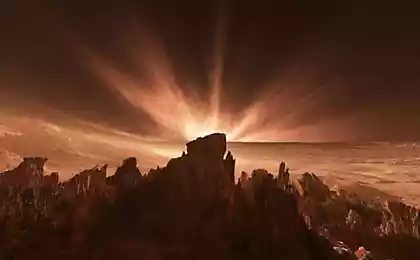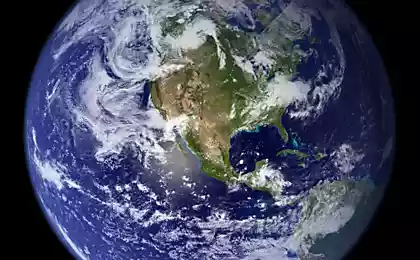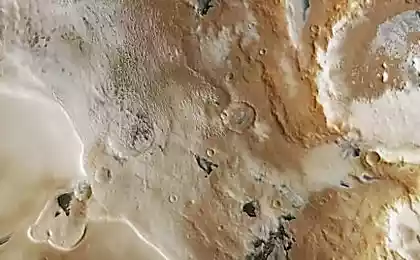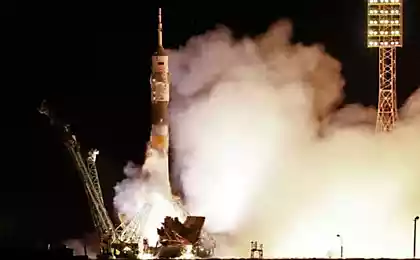2402
Photos of NASA, who must see
Today, Friday, we offer to sit relaxed in his chair and touch the beautiful, because personally I really enjoyed during the preparation of this material.
Under the cut a lot of photos and images taken from your account NASA Goddard Space Flight Center to flicker, all clickable, as well as provides links to download at the highest resolution possible. Some of the originals are huge and suitable for wall photos, seriously, so be careful with traffic.
And now enjoy.
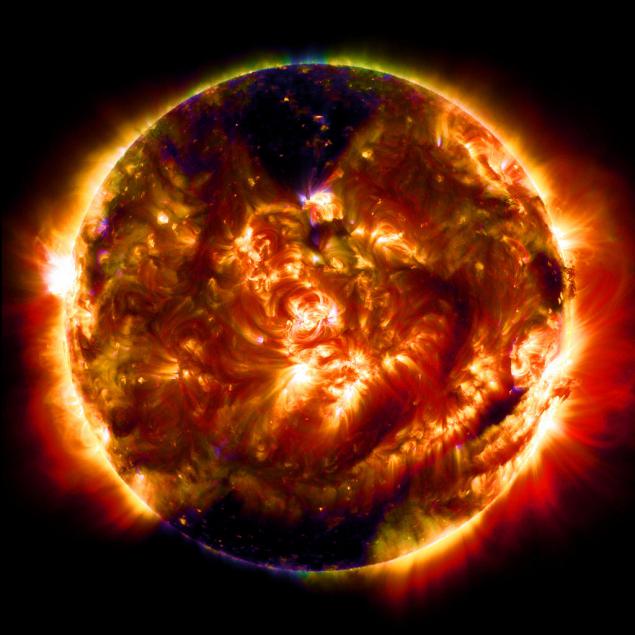
Large (2048 x 2048) Original (4096 x 4096)
100 millionth frame made in the SDO (Solar Dynamics Observatory) NASA. To create a frame used in parallel four telescopes, which in turn photographed the sun in ten different wave bands every 12 seconds.
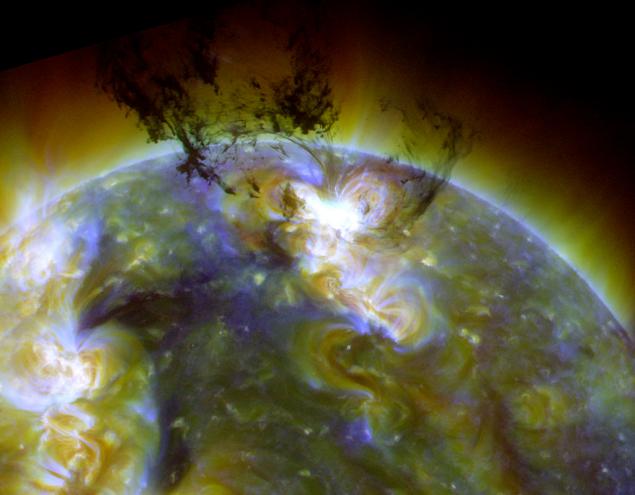
Original (1770 x 1379)
Another shot from the SDO. This time the shot hit "solar eruption" if you can call it. The camera recorded the release of huge amounts of dark, cold matter in the crown of our star, most of which fell back to the surface of the sun. This event is compared with the formation of new stars due to gravitational forces, when the gas is collected together from the surrounding space.

Original (1165 x 361)
Panoramic shot of the Andromeda galaxy by the Hubble Space Telescope.

Original (1280 x 983)
"American Idol." This Hubble picture placer blue lights - a clump of blue dwarf galaxies (!), Known as Markarian 209. All cluster is filled with young white and blue (and therefore very hot) dwarf stars. By all standards astranomicheskim cluster is very young, not more than 3 million years. For comparison, our star, the Sun, already 4.6 billion years.
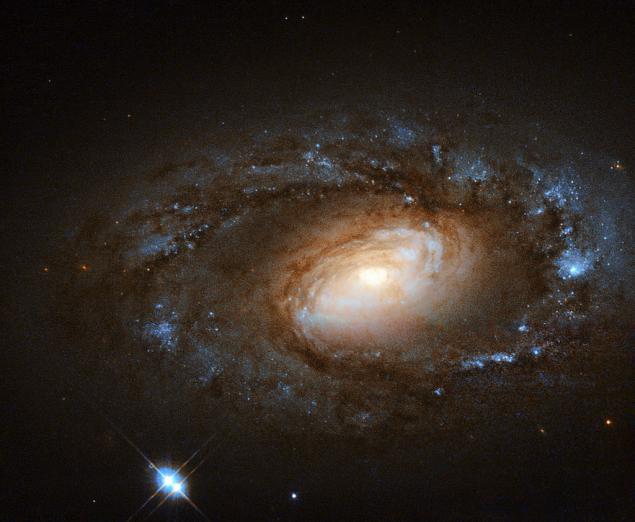
Original (1280 x 1051)
Again Hubble picture. Spiral galaxy located in the constellation Ursa Major.
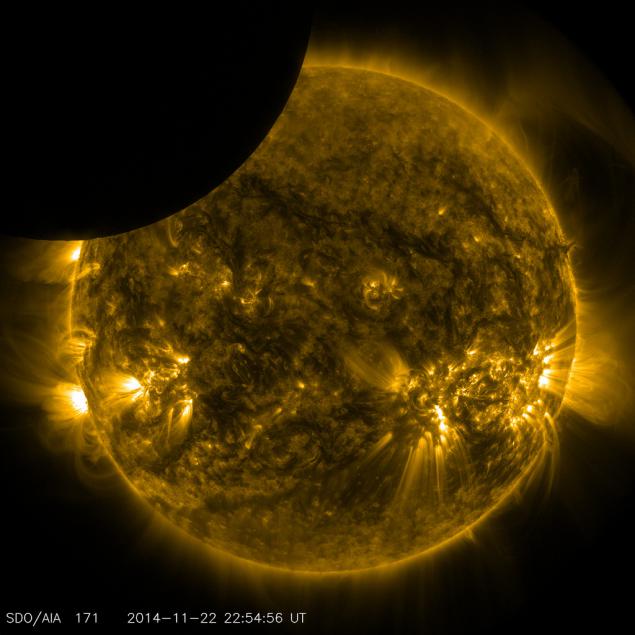
Large 2048 (2048 x 2048) Original (4096 x 4096)
The picture was taken November 22, 2014 from 17:29 to 18:04 EDT. On that day, there was a partial solar eclipse.
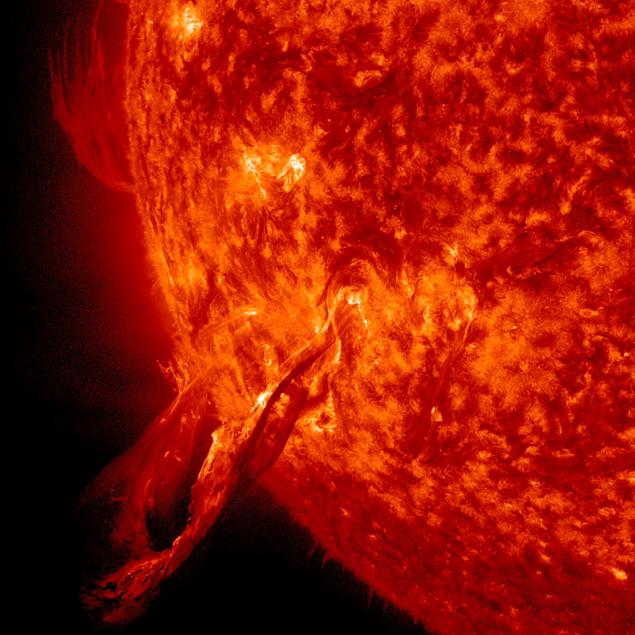
Original (1500 x 1500)
The picture was taken SDO. Huge prominences on the Sun 1 November 2014.

Original (2048 x 2048)
Giant flare on the sun.
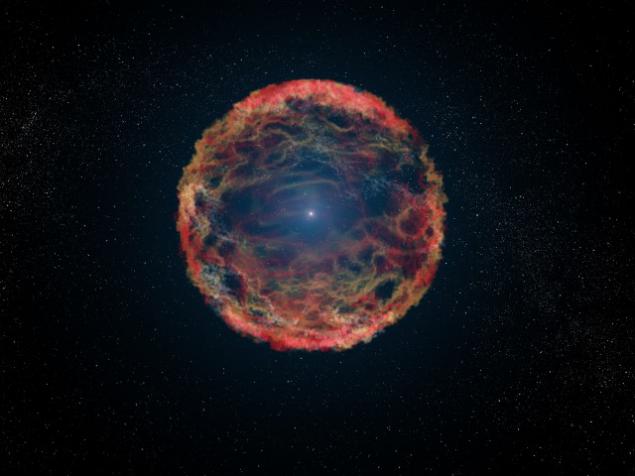
Original by clicking.
Thanks to Hubble, astronomers were able to confirm the existence of a rare type of supernova. This picture illustrates the theory that the supernova, known as SN 1993J, formed during the explosion of a star in a binary star system.
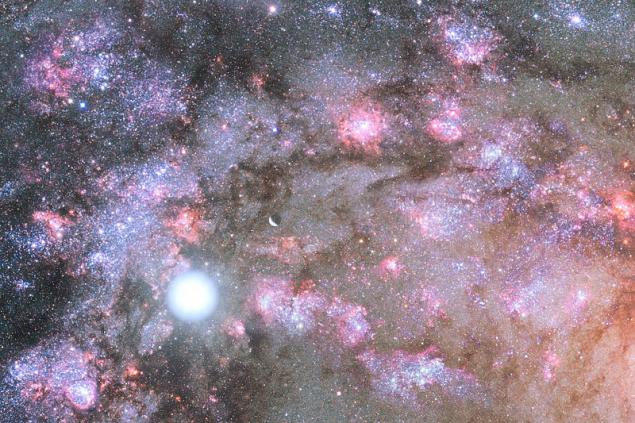
Original (1001 x 667)
In this frame displays the process of nucleation young stars in elliptical galaxy.
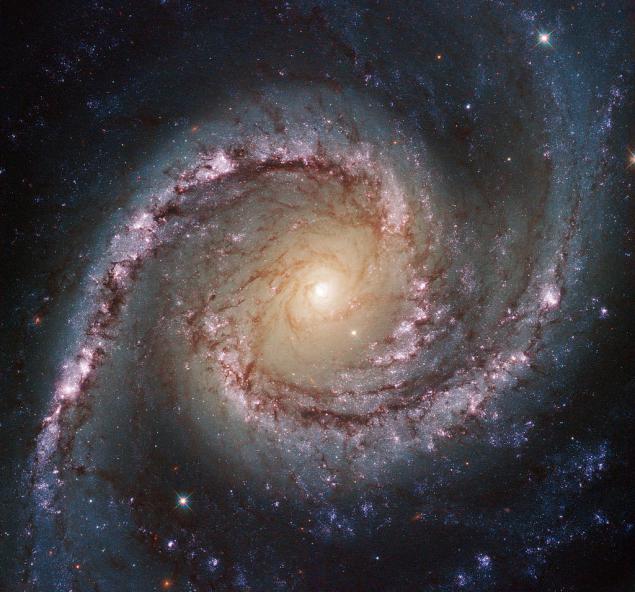
Original (1280 x 1193)
Galaxy NGC 1566 "Big Eddy" with an extremely bright nucleus, distant from us 40 million light-years.
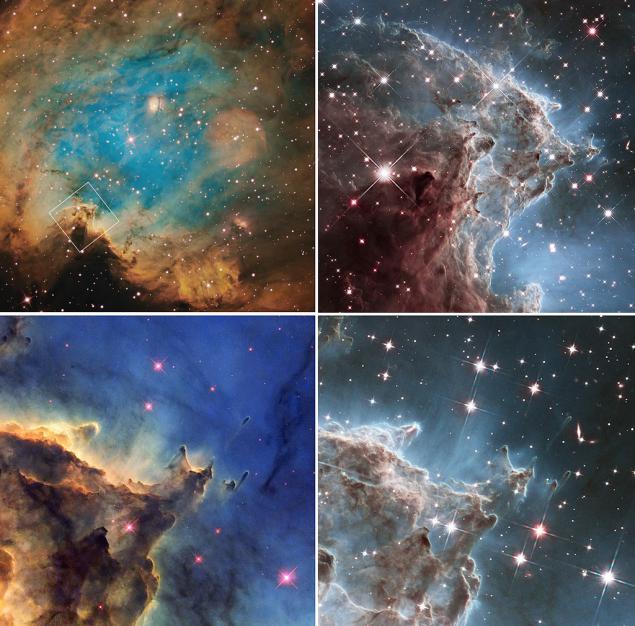
Original (1128 x 1111)
Photo of gas accumulation in the nebula "monkey head". From these clouds eventually form new stars. Such nebulae - "building blocks of the universe».
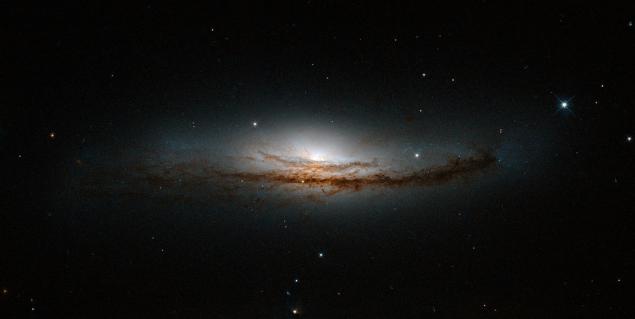
Original (1280 x 643)
Photos of the galaxy away from us 150 million light-years away in the constellation Libra. Such galaxies are incredibly bright nucleus, that astronomers believe may be due to the presence of a black hole in the center that pulls to his cosmic dust and gas.
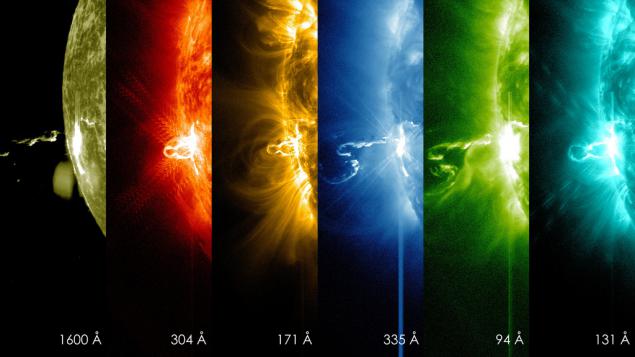
Large 2048 (2048 x 1152) Original (3840 x 2160)
Photos solar prominence in different wave bands.
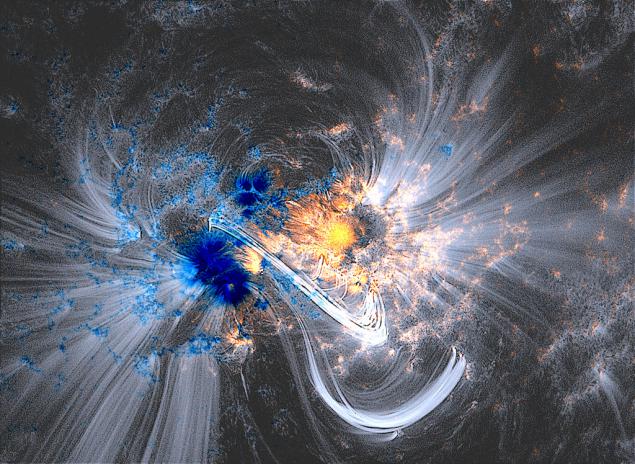
Original (1265 x 924)
Snapshot "Magnetic Dance" our star. Visual display of magnetic fields, because of which subsequently formed the phenomenon of "coronary loop».

Large 2048 (1964 x 2048) Original (6780 x 7071) 70 MB !!!
And finished in a picture known to many "Pillars of Creation».
Source: geektimes.ru/post/245094/
Under the cut a lot of photos and images taken from your account NASA Goddard Space Flight Center to flicker, all clickable, as well as provides links to download at the highest resolution possible. Some of the originals are huge and suitable for wall photos, seriously, so be careful with traffic.
And now enjoy.

Large (2048 x 2048) Original (4096 x 4096)
100 millionth frame made in the SDO (Solar Dynamics Observatory) NASA. To create a frame used in parallel four telescopes, which in turn photographed the sun in ten different wave bands every 12 seconds.

Original (1770 x 1379)
Another shot from the SDO. This time the shot hit "solar eruption" if you can call it. The camera recorded the release of huge amounts of dark, cold matter in the crown of our star, most of which fell back to the surface of the sun. This event is compared with the formation of new stars due to gravitational forces, when the gas is collected together from the surrounding space.

Original (1165 x 361)
Panoramic shot of the Andromeda galaxy by the Hubble Space Telescope.

Original (1280 x 983)
"American Idol." This Hubble picture placer blue lights - a clump of blue dwarf galaxies (!), Known as Markarian 209. All cluster is filled with young white and blue (and therefore very hot) dwarf stars. By all standards astranomicheskim cluster is very young, not more than 3 million years. For comparison, our star, the Sun, already 4.6 billion years.

Original (1280 x 1051)
Again Hubble picture. Spiral galaxy located in the constellation Ursa Major.

Large 2048 (2048 x 2048) Original (4096 x 4096)
The picture was taken November 22, 2014 from 17:29 to 18:04 EDT. On that day, there was a partial solar eclipse.

Original (1500 x 1500)
The picture was taken SDO. Huge prominences on the Sun 1 November 2014.

Original (2048 x 2048)
Giant flare on the sun.

Original by clicking.
Thanks to Hubble, astronomers were able to confirm the existence of a rare type of supernova. This picture illustrates the theory that the supernova, known as SN 1993J, formed during the explosion of a star in a binary star system.

Original (1001 x 667)
In this frame displays the process of nucleation young stars in elliptical galaxy.

Original (1280 x 1193)
Galaxy NGC 1566 "Big Eddy" with an extremely bright nucleus, distant from us 40 million light-years.

Original (1128 x 1111)
Photo of gas accumulation in the nebula "monkey head". From these clouds eventually form new stars. Such nebulae - "building blocks of the universe».

Original (1280 x 643)
Photos of the galaxy away from us 150 million light-years away in the constellation Libra. Such galaxies are incredibly bright nucleus, that astronomers believe may be due to the presence of a black hole in the center that pulls to his cosmic dust and gas.

Large 2048 (2048 x 1152) Original (3840 x 2160)
Photos solar prominence in different wave bands.

Original (1265 x 924)
Snapshot "Magnetic Dance" our star. Visual display of magnetic fields, because of which subsequently formed the phenomenon of "coronary loop».

Large 2048 (1964 x 2048) Original (6780 x 7071) 70 MB !!!
And finished in a picture known to many "Pillars of Creation».
Source: geektimes.ru/post/245094/














